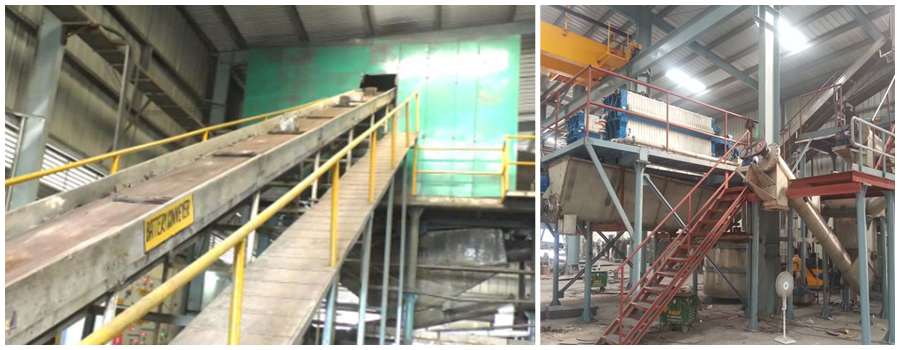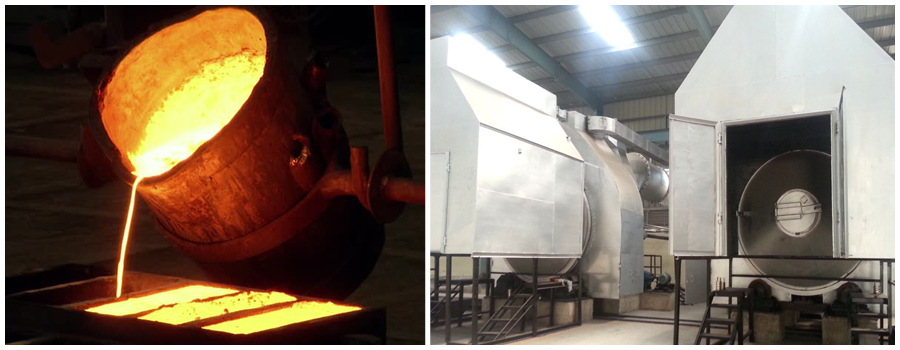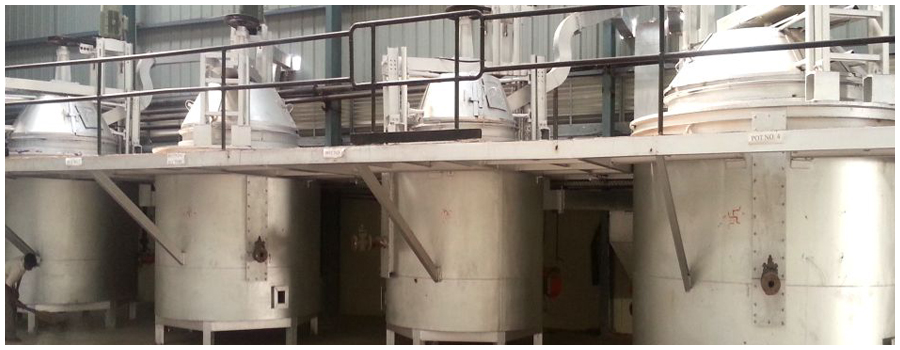The lead recycling process is of great interest in the lead industry. Nowadays, more than 50% of the overall world lead production comes from secondary lead smelters. The main raw material for this process is used lead-acid batteries ( ISRI Rains) and lead scrap ( ISRI Radio). Roughly, about 90% of scrap batteries are recycled.
Lead has one of the highest recycling rates in the world, higher even than better known recycled objects such as paper or glass. It is also the most recycled metal of all those commonly used, far greater than copper, aluminum, or zinc.
Lead recycling makes a significant contribution to sustainable development, easing the pressure on non-renewable resources and reducing carbon emissions through a simple and energy-efficient recovery method.
Lead Recycling Process includes these following steps:
- Lead Battery Breaking and Separation
- Lead Smelting
- Lead Refining and Alloying
- Lead Casting
1. Lead Battery Breaking and Separation
It is used Lead-acid scrap batteries are received through containers/trucks will be unloaded at the battery recycling plant, from where batteries will be processed through a breaking and separation system.
These scrap batteries are crushed in the hammer and the output is passed through a sieve conveyor to clean off and separate the Lead Oxide powder. After this Lead and plastics are separated in the sink and float tanks. The PP and PE are also separated inside the last tank. The entire system is a closed-loop, and the water is re-circulated after passing through a filter press. An acid neutralization system is also used to treat the water before re-circulation.

2. Desulphurization System
Lead Paste is collected in a tank can be delivered either to the desulphurization system or pumped to a filter press for dewatering from where the paste cake is discharged in a dedicated area ready for smelting.
The desulphurization system of lead paste is the extreme diminution of SO2 emission and the production of slag decreased all the way down to less than 10% of produced lead. The productivity of the smelting furnace is increased due to a lower quantity of reagents and fluxes to be added to the process.
The paste slurry is pumped into a reaction tank and is combined with the waste acid collected in the battery storage area. The desulphurization reaction can be performed through the addition of Sodium Hydroxide, or Sodium Carbonate, or Ammonium Bicarbonate.
The reacted paste slurry is pumped to the filter press for dewatering then the paste cake is discharged in a dedicated area ready for lead smelting.
3. Lead Smelting
Lead Smelting is the process of separating the metal from impurities. It is placed into a furnace where it is heated by high temperatures. It causes the metal to melt. Smelting the raw material produces a metal or a high-grade metallic mixture along with a solid waste product called lead dust and toxic slag.

4. Lead Refining and Alloying
The lead received from Rotary Furnace (smelting) is called hard lead /crude lead. The lead tapped from the furnace has to be cleaned from residual oxides and slag. After stirring for a while all the impurities settle at the surface and are skimmed off.
Lead recovered via blast furnace contains a lot of contamination and undesired components. On the other hand, the Lead required for battery manufacturing is either soft Lead with 99.97% purity or hard Lead with varying Antimony compositions. In order to make the quality of lead suitable for its different uses, different variations of pot melting processes are employed.
Lead is melted within the pot; components which include Sulphur, Wooden Powder & Coke Breeze are added and blended gently followed by dross removal. Thereafter, Tin & Antimony are added to the liquid metal to get the desired grade of Lead.

5. Lead Casting
Lead Ingot Casting is done by Casting Machine. This machine is a combination of chain conveyor mechanisms. The molds are filled with Pure Lead with a lead pump or through flow regulating valves. The feeding system has load cell mounted, which controls the speed of the Lead pump and it regulates the flow of lead automatically.
The ingot stacking process is used after the casting system to continuously make a stack of Lead ingots which can be strapped and handled by forklifts. This machine saves labor and makes the operation quicker and convenient.
